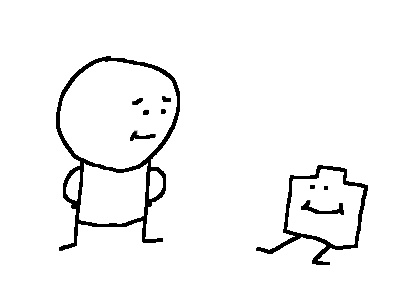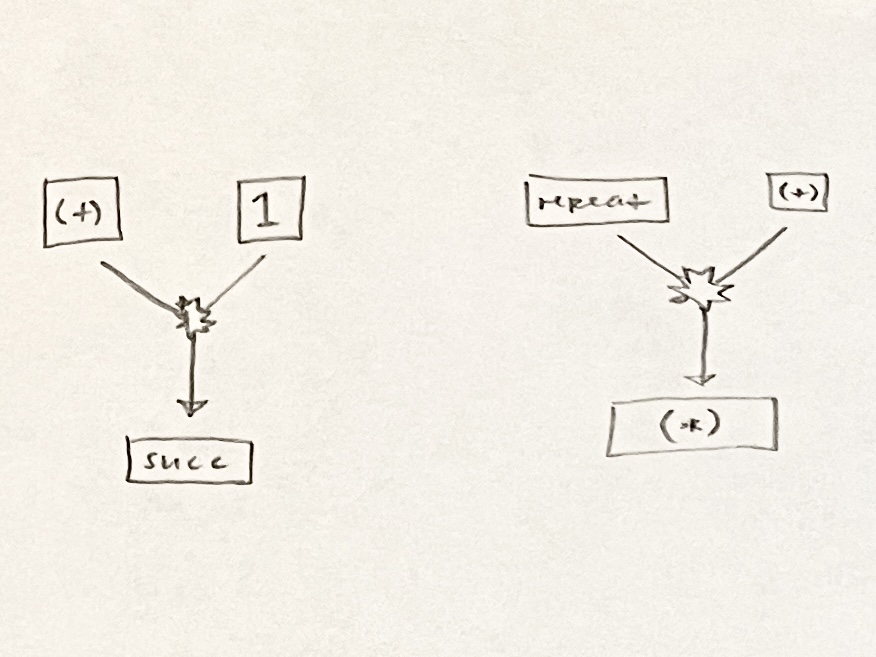
A little over a year ago I stumbled upon "functional programming," and taught myself the basics of Haskell syntax. Having a little bit of a background in Python at the time, learning how to write algorithms without the help of "traditional" loops or variables, coding in Haskell proved to be a fun challenge at the time.
Then relatively recently, I participated in a small, educational video game company's month-long internship program. As an assignment, we were meant to design a game that would teach players the basics of astronomy, botany, chemistry, programming, etc., etc. I chose to work with programming, and I had the idea to teach players to think and code in a functional paradigm.
That's when, after a series of bad ideas, my idea of "LambdaBlocks" came into mind.
My first idea was really bad. I initially decided to work on a "little alchemist" kind of game, where the player would combine simple functions (like Haskell's "succ" or "id") to create more complicated functions. But this would completely dodge the whole idea of teaching the basics of functional programming. It was a terrible idea.

I then decided to create what would essentially be a block code version of lambda calculus. This was better than the previous idea, but it still wasn't good. The company I was interning at was probably expecting a demographic of really young kids, and throwing them into a Turing tarpit didn't sound like a very productive idea. I won't even pretend I understand lambda calculus all that much.

My third idea didn't seem all that bad. I decided to model a block coding language after Haskell. At first, the language I was designing wouldn't be exactly like Haskell. I took the vague concept of "chaining" functions together, which would look like a horizontal tower of many legos, and these would simplify into a single value, as elegantly as reductions of functions in lambda calculus.
Except it wasn't elegant. It was really, really ugly, and I hated it after a few days. I couldn't come up with an elegant syntax (not really syntax, but a concept of how the language would work) and I felt I needed to scrap that idea after throwing too many parentheses in (that's when it turned into Haskell, lego edition).
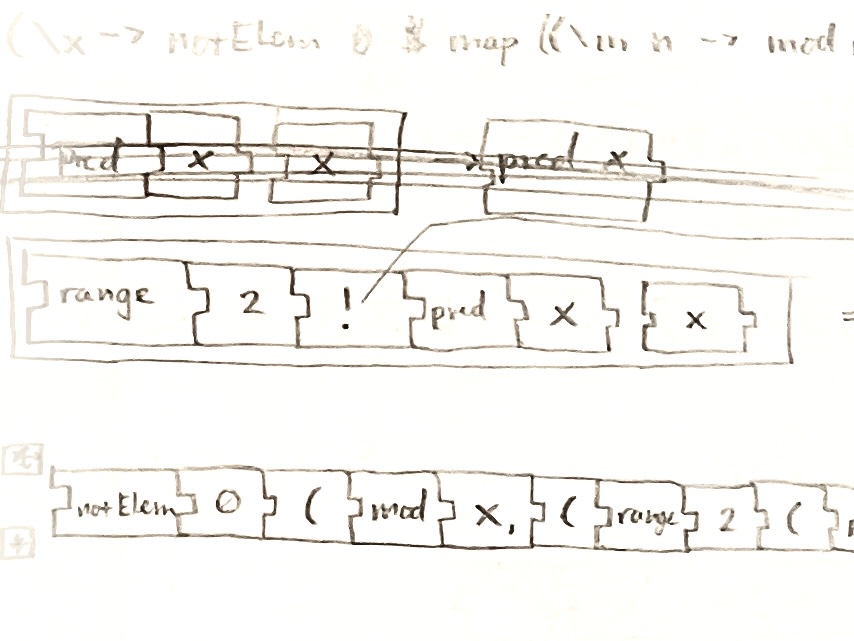
Then, whether by some divine intervention or bad mayo in my chicken sandwich, I came up with what would have been the best concept of a functional block coding language. Explaining it without visuals would be difficult, so I've prepared some illustrations, along with notes from the time of designing this.
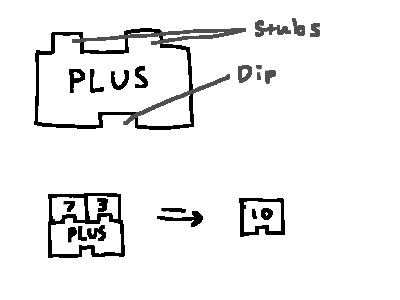
Functions would take the form of blocks (obviously). These blocks are composed of stubs and dips. Stubs are where other blocks connect, and are where the function's parameters go. Every block comes with one dip, which acts like their return value.
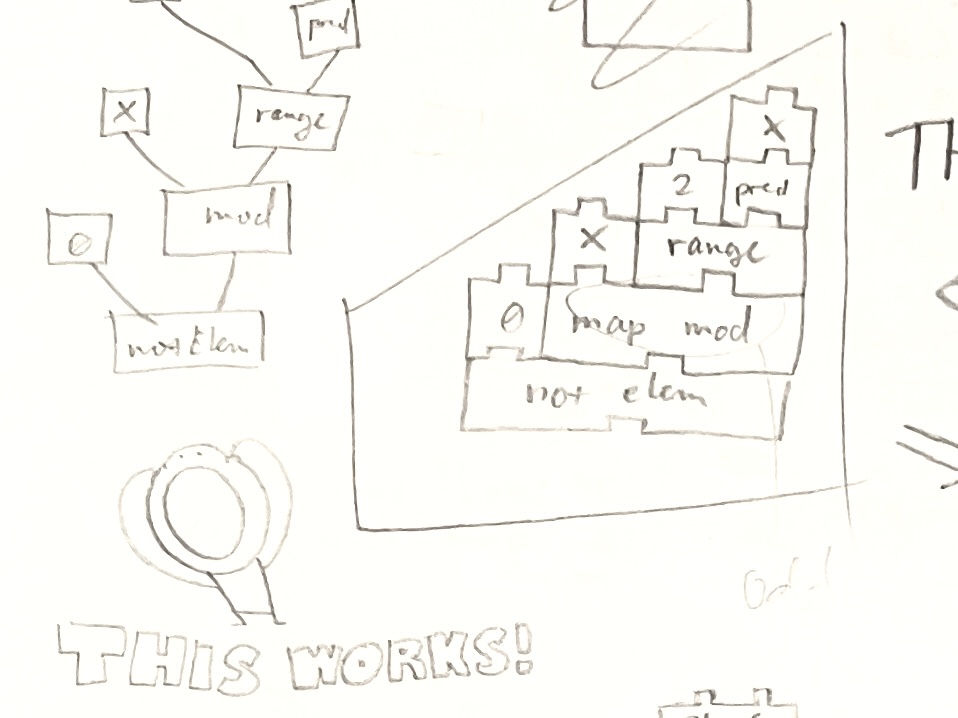
In this language (LambdaBlocks), groups of blocks, called stacks, can either be defined as a function or evaluated as a literal value. The following diagram is one of an (unoptimized) example of a prime-checking function:
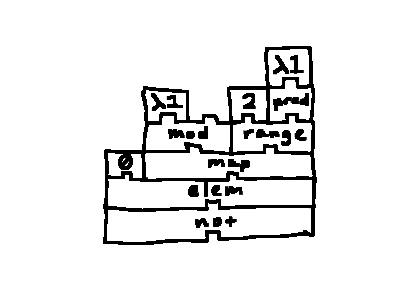
Stacks aren't exactly parsed from the top to bottom. Instead, the interpreter starts at the bottom block, and checks if all parameters are of the correct type. If so, parse the block and its parameters! If not, then continue up the stack (doing so in a somewhat recursive fashion) until the parameters of a given block are all the correct type.
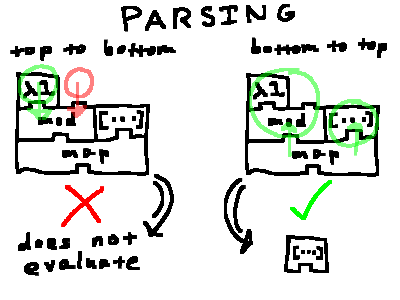
This seems needlessly complicated, but it actually allows for higher order functions. The "mod" block is supposed to be passed into the "map" block along with its parameter. However, if the interpreter parsed the stack from the top, then it would try to evaluate the "mod" block before rightfully passing it into the "map" block, obviously introducing issues involving functions as parameters (which is like, the whole point to functional programming!). Parsing the stack from the bottom allows for the "mod" and its parameter to be passed into the "map" block, allowing for higher order functions to be used in function definitions.
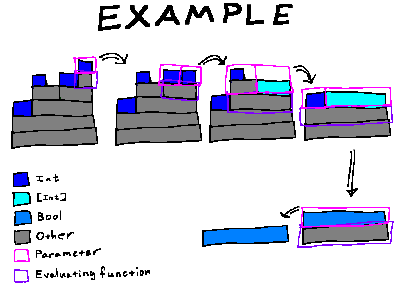
There's a lot more to this language, though. I modeled it after Haskell (the prime function I drew is actually based on a simple Haskell prime function), so there are other features I've implemented in its design, like guards and recursion.
I was frantically putting a project together when the assignment was due in two days. I was hard-coding many different cases that stacks may come in, knowing very well that at my level of programming experience, I would not be able to create a valid interpreter without several more weeks.
Then, the day before my presentation, I learned the assignment was just that. I had to present the concept of my language's design. It turns out, creating this language was not at all a requirement.
Maybe I would have been justified at being a little annoyed at myself, but it was never explicitly stated that I only needed to present my concept. But out of that stressful, and pointless, work, a cool idea came out of it.
